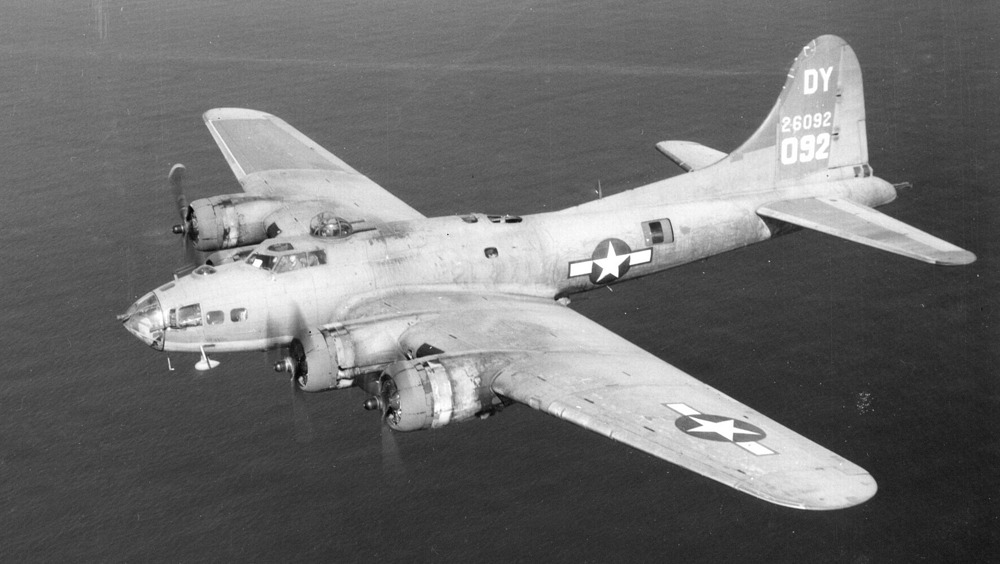History
The B-17F was the direct successor to the B-17E and marked the first Flying Fortress variant to enter true mass wartime production. While only 512 B-17Es had been built, a total of 3,405 B-17Fs were produced and delivered for the US Army Air Forces’ expanding strategic bombing campaign.
Many of the B-17F’s refinements were based on operational feedback from earlier models, particularly the B-17D’s performance in the Pacific. Externally, the B-17F was nearly identical to the B-17E, with the most visible change being the frameless Plexiglas nose cone, replacing the older framed version. The aircraft also received new fully-feathering paddle-blade propellers with a slightly larger diameter of 11 feet 7 inches, requiring modified engine cowlings.
Internally, the F model incorporated over 400 changes, including a new version of the Wright R-1820-97 Cyclone engines, rated at 1,380 horsepower at war emergency power. Other changes included improved instrumentation, a standardized Sperry ball turret, a stronger undercarriage to support heavier bombloads, enhanced oxygen systems, and increased crew armor protection.
The first B-17F flew on May 30, 1942, and began entering combat service shortly thereafter. These aircraft were rapidly deployed to reinforce bomb groups in both the European and North African theaters, replacing worn-out B-17Es. By 1943, the B-17F had become the primary bomber of the Eighth Air Force, conducting deep-penetration bombing raids over German-occupied Europe. Many aircraft flew 100 or more missions, with crew members typically rotated out after 25 missions, a number that increased later in the war.
Due to the constant introduction of incremental modifications, the B-17F became one of the most complex variants to track, so it had block numbers to differentiate sub-variants. Production was divided among Boeing (2,300 aircraft), Douglas (605), and Lockheed Vega (500). Each factory had its block number system. For example, the first 50 aircraft built by Boeing were designated B-17F-1-BO, followed by -5, -10, and so on, with increasing variation as production progressed.
Beginning with B-17F-1-VE and B-17F-10-DL, factory-fitted glide bomb attachments were introduced. To address the vulnerability to frontal attacks, field modifications added cheek guns in the nose of some early aircraft. These were later incorporated into production, starting with B-17F-55-BO and B-17F-15-DL, using bulged side windows to improve visibility and firing angles.
Additional modifications included: from B-17F-30-BO onward, a gun was added atop the radio compartment, firing upward from a transparent hatch; from B-17F-30-BO, F-20-DL, and F-20-VE, external bomb racks were fitted under the inner wings for two 4,000-pound bombs, although these were removed starting with B-17F-95-BO due to range penalties and maneuver limitations; the Bendix remotely-operated chin turret began appearing with B-17F-75-DL to further bolster frontal defense; and a nose astrodome was introduced beginning with B-17F-45-BO, F-15-DL, and F-15-VE blocks.
As the B-17F evolved, its later subvariants, especially those with cheek guns and chin turrets, began to resemble the definitive B-17G, which would become the most standardized and heavily armed version of the Flying Fortress.
Only three B-17Fs survived after the war. The most famous among them is the Memphis Belle, the first US Army Air Forces heavy bomber to complete 25 missions over Europe and return home with her crew. She has since been fully restored and is now on display at the National Museum of the United States Air Force in Dayton, Ohio.









